| Intl. Notebook | Jan 6 2022 |

West German magazine tears down the wall.

German isn't one of our languages, but who needs to read it when you have a magazine with a red and purple motif that's pure eye candy? Every page of this issue of the pop culture magazine Bravo says yum. It hit newsstands today in 1957 and is filled with interesting and rare starfotos of celebs like Romy Schneider, Horst Buchholz, Clark Gable, Karin Dor, Mamie Van Doren, Ursula Andress, Marina Vlady, Corinne Calvet, jazzists Oscar Peterson and Duke Ellington, and many others. This was an excellent find.
We perused other issues of Bravo and it seemed to us—more so in those examples than this one—that it was a gay interest publication. After a scan around some German sites for confirmation we found that it was as we thought. The magazine's gay themes were subtle, but they were there, and at one blog the writer said that surviving as a gay youth in West Berlin during the 1960s, for him, would have been impossible without Bravo. We will have more from this barrier smashing publication later. Thirty-five panels below.
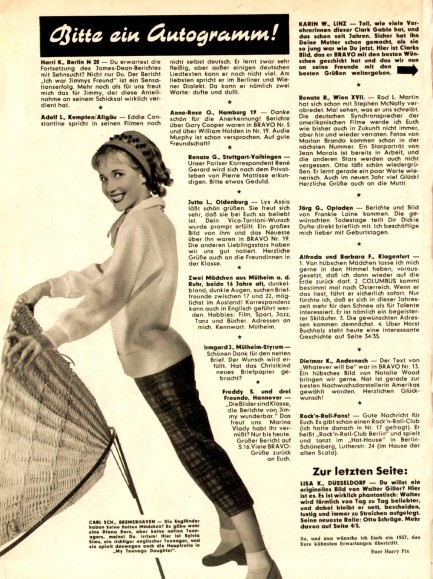
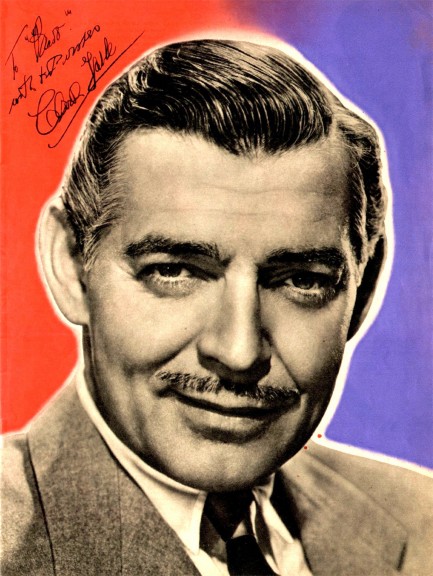
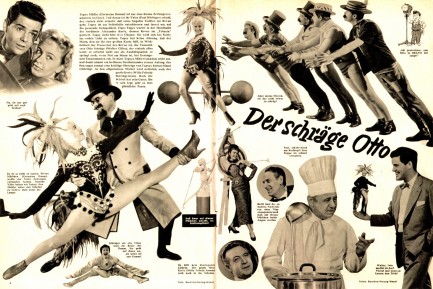
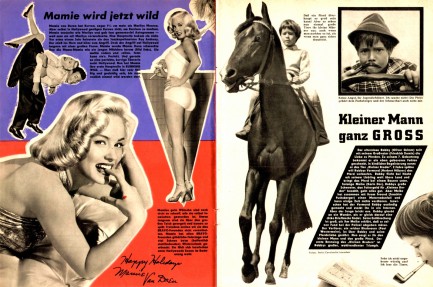

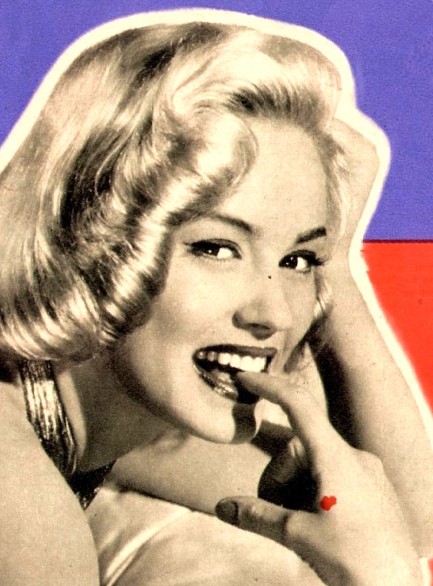
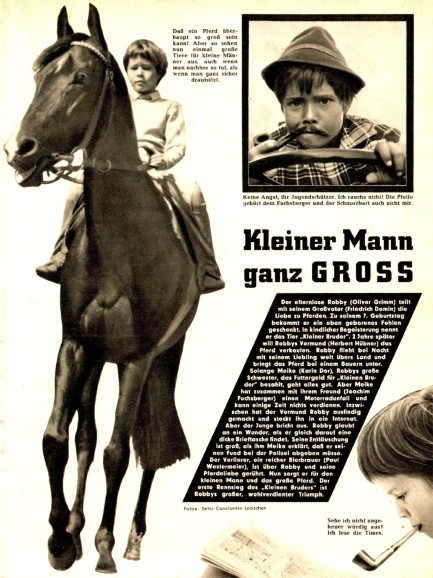
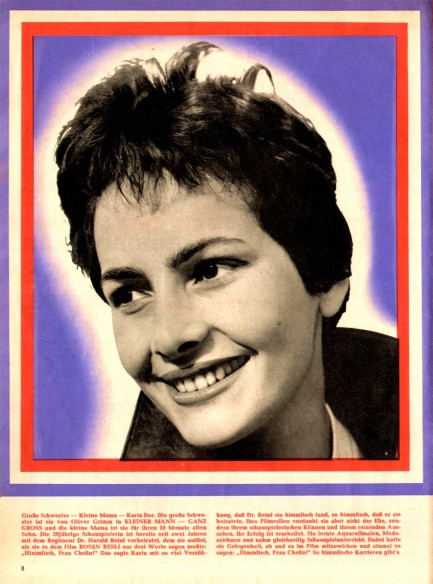
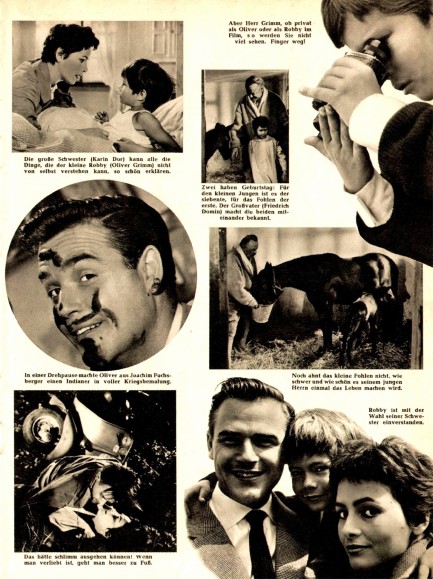
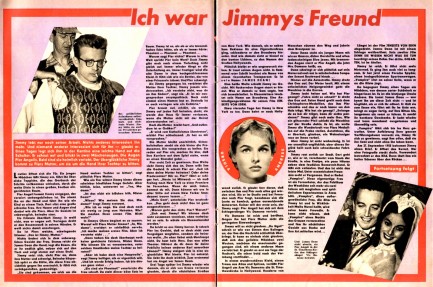
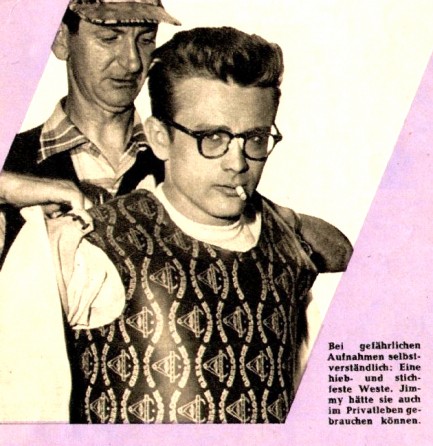
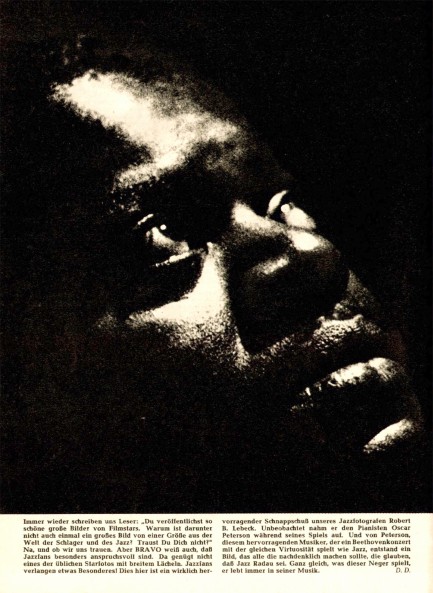
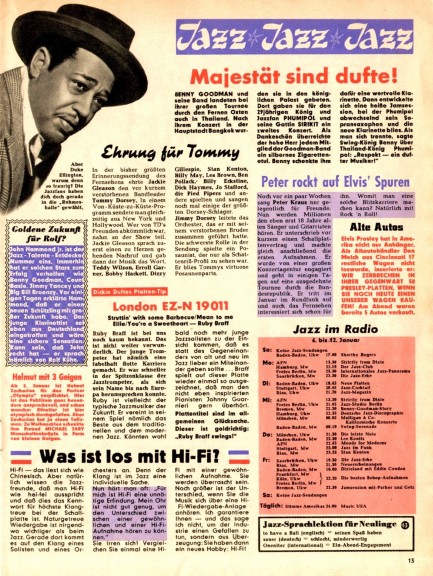
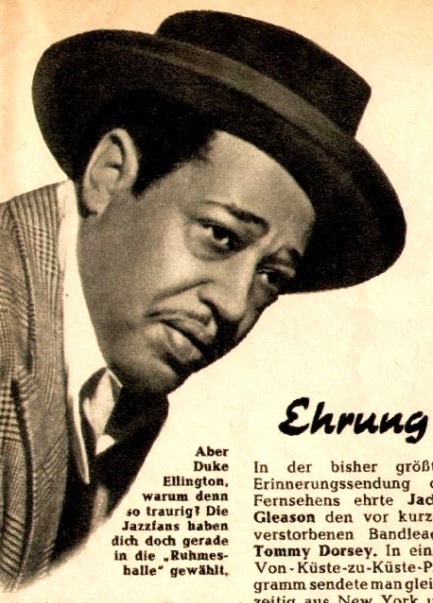
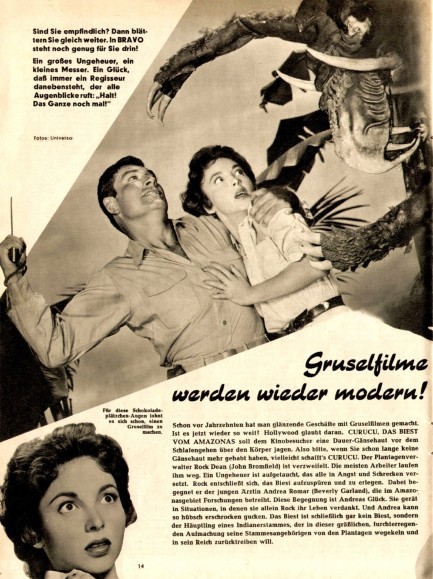
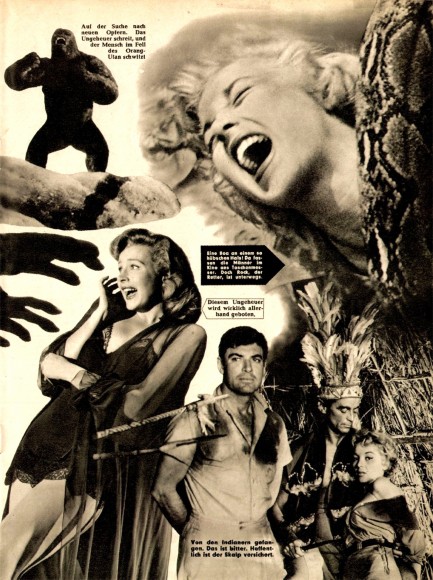
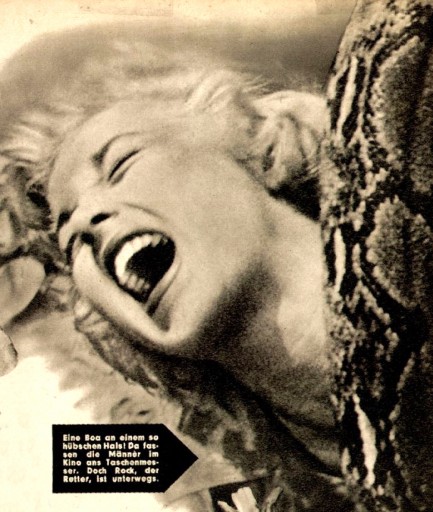
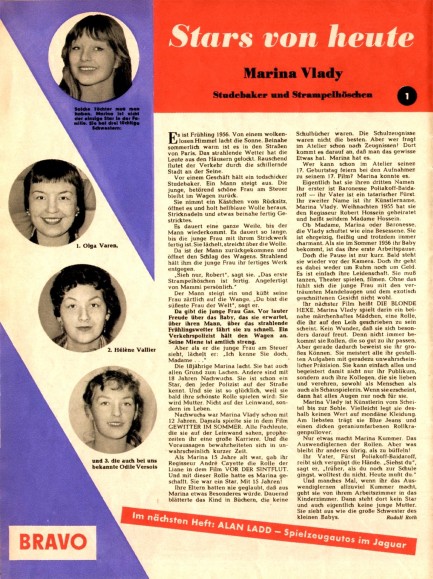
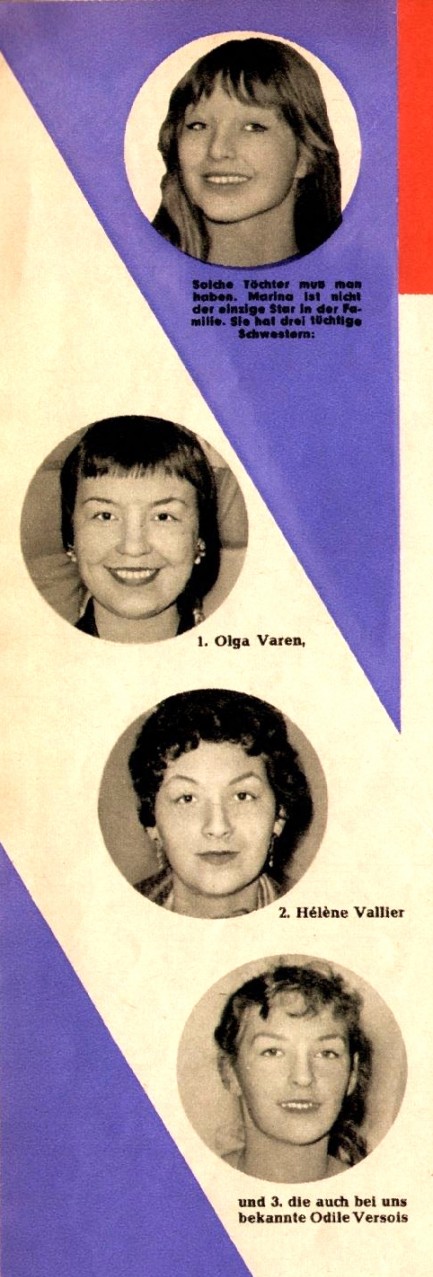
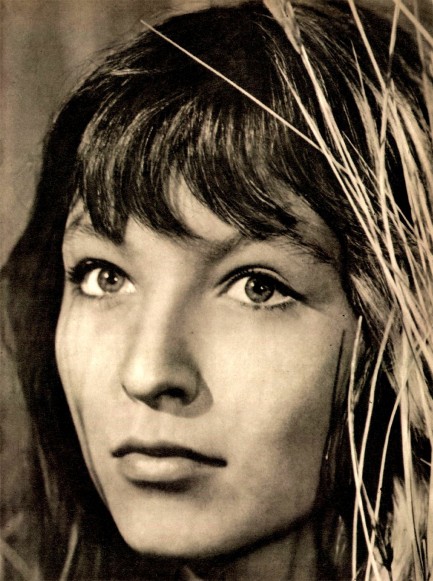
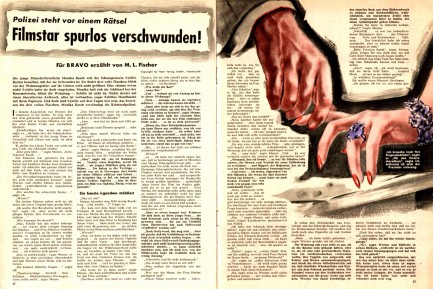
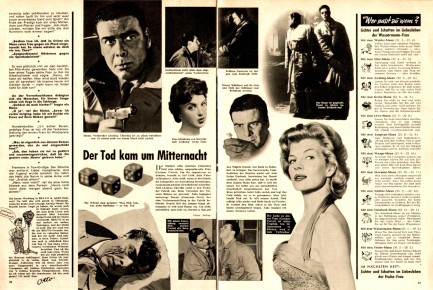
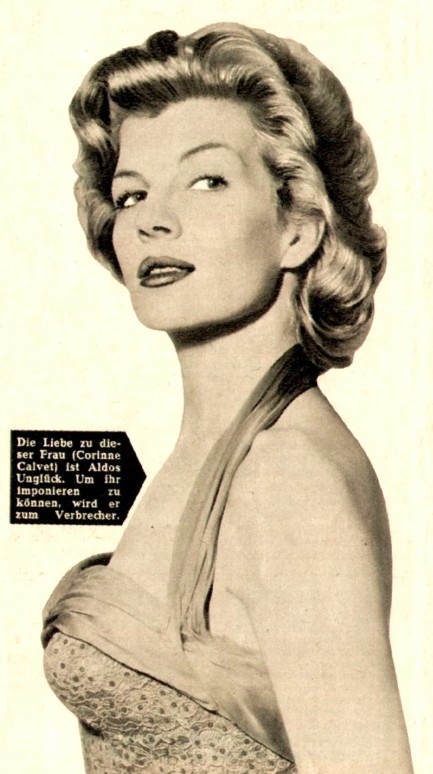
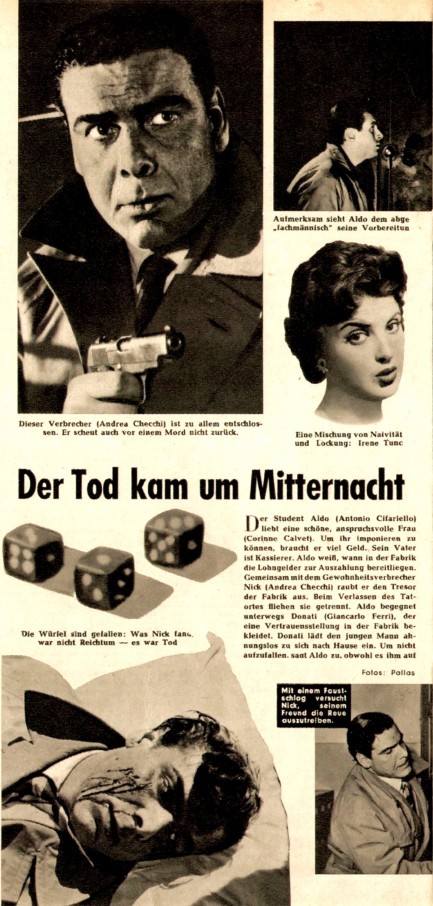
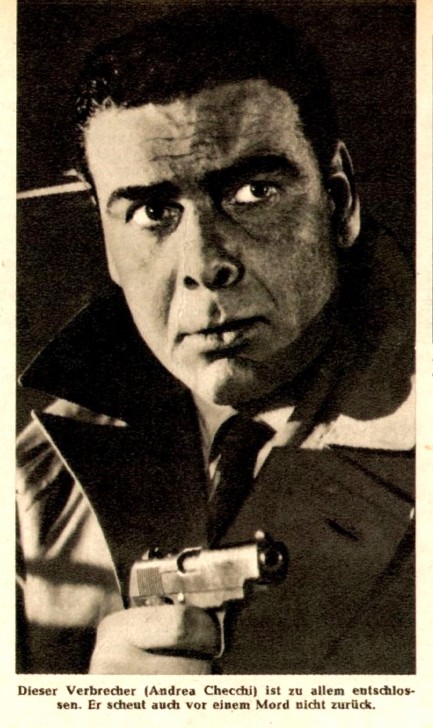
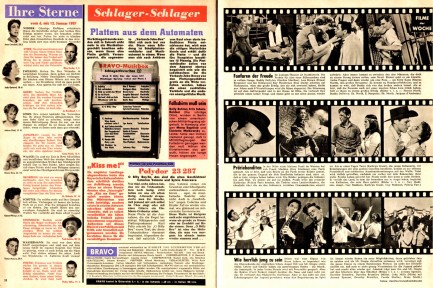

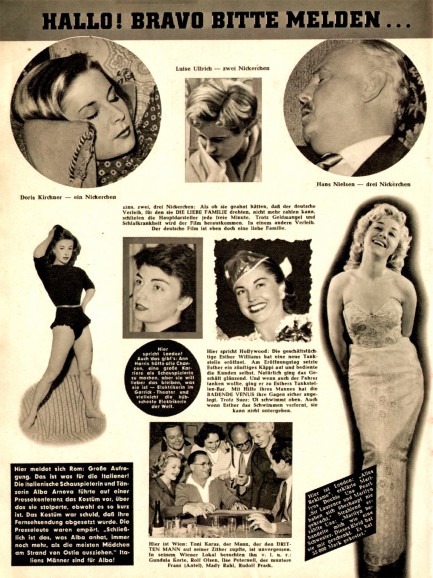
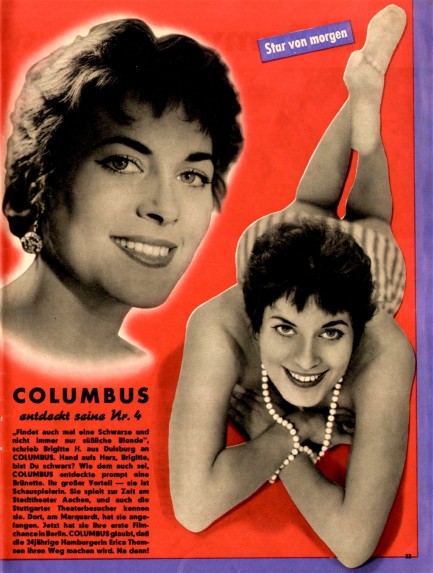
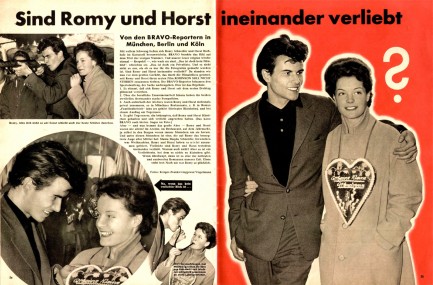
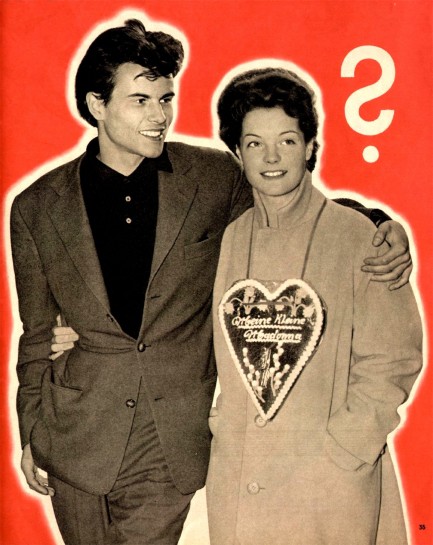
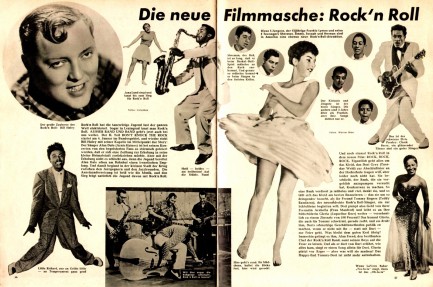
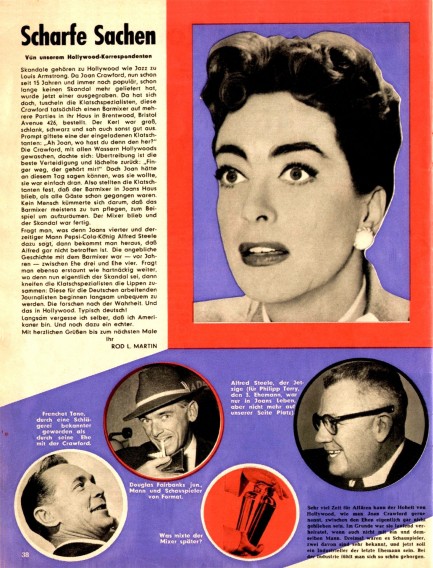
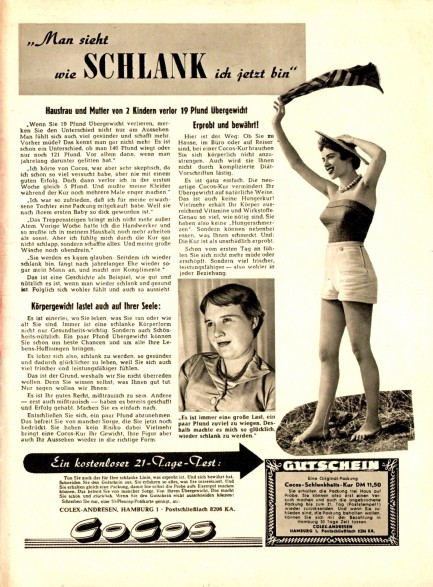

West GermanyBerlinBravo MagazineRomy SchneiderHorst BuchholzClark GableKarin DorMamie Van DorenUrsula AndressGermaine DamarMarina VladyCorinne CalvetOscar PetersonLittle RichardSylvia SimsJames DeanUrsula AndressJohn BromfieldBeverly GarlandOlga VarenHélène VallierOdile VersoisAndrea ChecchiIrene TuncJoan Crawfordtabloidlgbt
| Vintage Pulp | Nov 15 2019 |

We knew Amazon working conditions were terrible, but now there's a monster too?
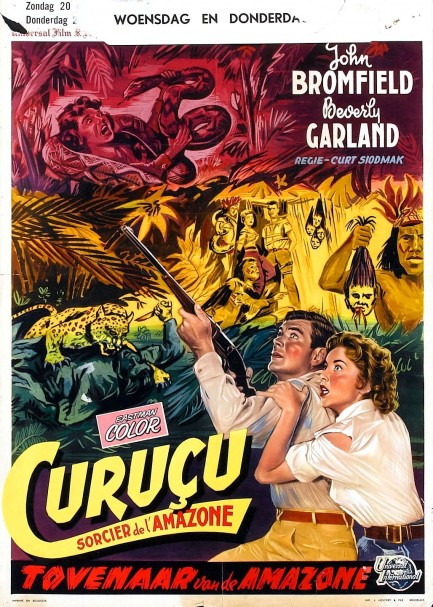
This is a brilliant Belgian poster for a terrible U.S. monster movie originally called Curucu, Beast of the Amazon, about plantation workers who are being terrorized by a horrible creature—possibly Jeff Bezos. Considering the low pay, hard work, and lack of bathroom breaks, the workers should have gone on strike long before the monster showed up. Unfortunately, before they can get organized the man in charge materializes to set everything straight. That would be John Bromfield, armed with a machete and a strong sense of entitlement, while Not of This Earth's Beverly Garland plays a scientist wandering the same patch of jungle looking for a miracle drug.
You'll need a miracle drug too, if you plan to watch this flick—we recommend mescaline. But really, you don't even have to watch it, because the poster covers all the salient plot points—Garland is attacked by a big rubber snake, Bromfield is attacked by a big stuffed leopard, they get tied up at one point but escape, and the villain dangles some shrunken heads at them before ending up one himself. Rapacious capitalism is saved again. The movie was called Curuçu sorcier de l'Amazone in French and Tovenaar van de Amazone in Dutch. There's no known Belgian premiere date for it, but it opened in the U.S. in late 1956 and probably reached Belgium in the middle of 1957.
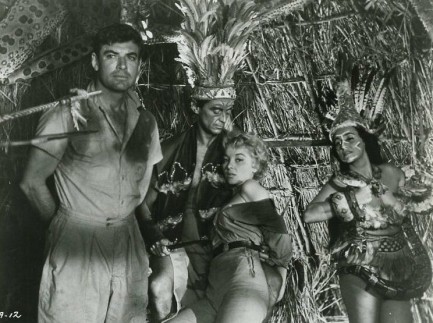
| Vintage Pulp | Nov 3 2018 |

She made him an offer he couldn't refuse.
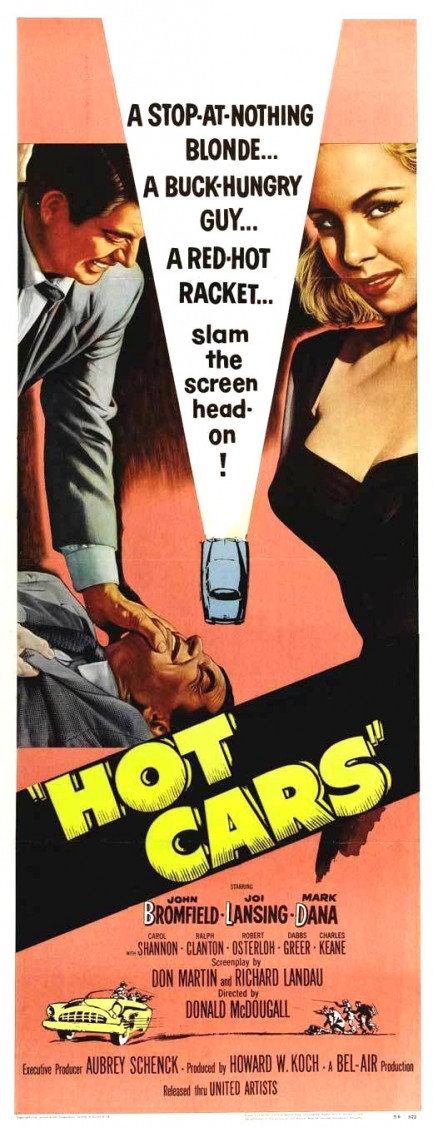
Above is a nice piece of promo art for Hot Cars, an obscure little flick some people classify as a film noir, but which we think of as a basic crime melodrama. A Culver City used car salesman's lofty ethics get him fired from a used car lot, but hired at another whose owner is looking for employees with “honest faces and honest souls to go along with them.” But there's more than meets the eye going on here. There's a stolen car ring working Southern California and our honest John begins to suspect it's his new employer's lot the autos are being funneled through. His suspicions are quickly confirmed—his boss wanted an honest face as a front for the crooked lot. Honest boy quits in a huff, but with a sick son and medical bills piling up he has to go crawling back, and from there he just gets in deeper and deeper. The film is nothing special, but statuesque Joi Lansing plays the owner's femme fatale wife, and she's the real heat in Hot Cars. At just an hour in length the movie comes with a discount in time expenditure, so with Lansing as part of the package it's a deal you shouldn't refuse. It premiered in the U.S. today in 1956.
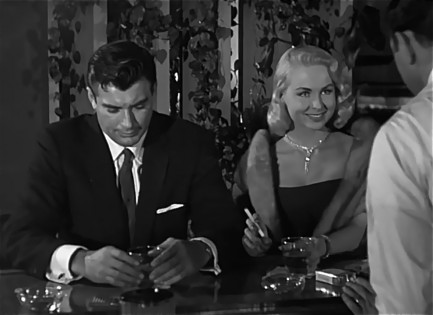 Hi, I'm Joi. I see you've noticed I'm sizzling hot.
Hi, I'm Joi. I see you've noticed I'm sizzling hot.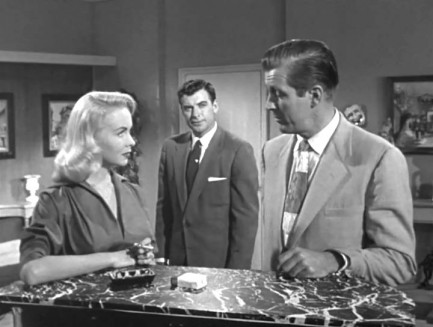 You'd give your right arm to have a woman as hot as me and we both know it.
You'd give your right arm to have a woman as hot as me and we both know it.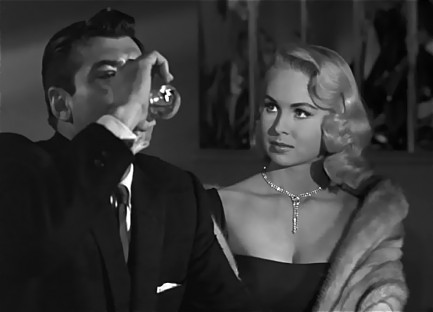 You realize the drink is just going to make me look even hotter, right?
You realize the drink is just going to make me look even hotter, right?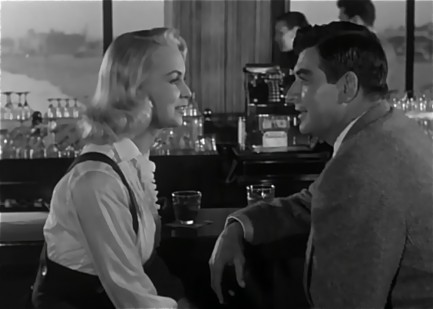 If you think I'm smoking hot at twenty-six, just wait until I hit my late thirties.
If you think I'm smoking hot at twenty-six, just wait until I hit my late thirties.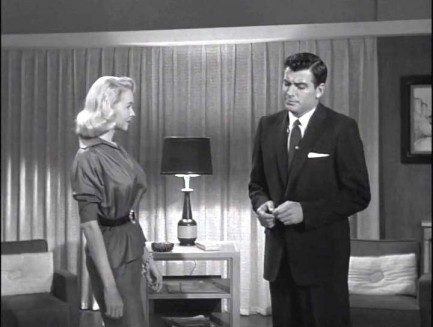 That heat in your chest isn't indigestion. It's me. It's my hotness.
That heat in your chest isn't indigestion. It's me. It's my hotness.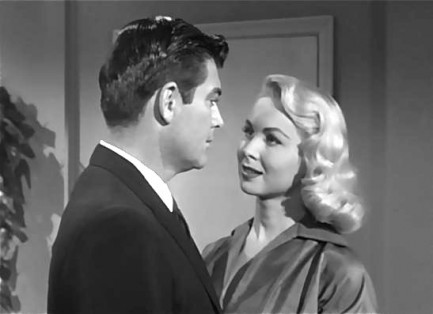 I'm hot, but often quite approachable too. Like now.
I'm hot, but often quite approachable too. Like now.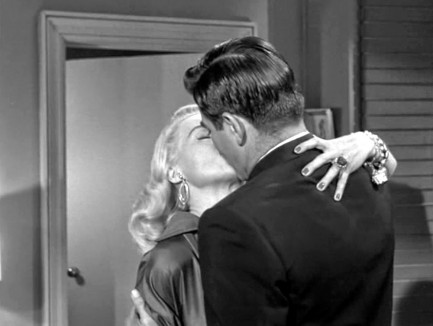 I'm going to ruin your life, but hotly, so you'll mostly love it.
I'm going to ruin your life, but hotly, so you'll mostly love it. 



































































